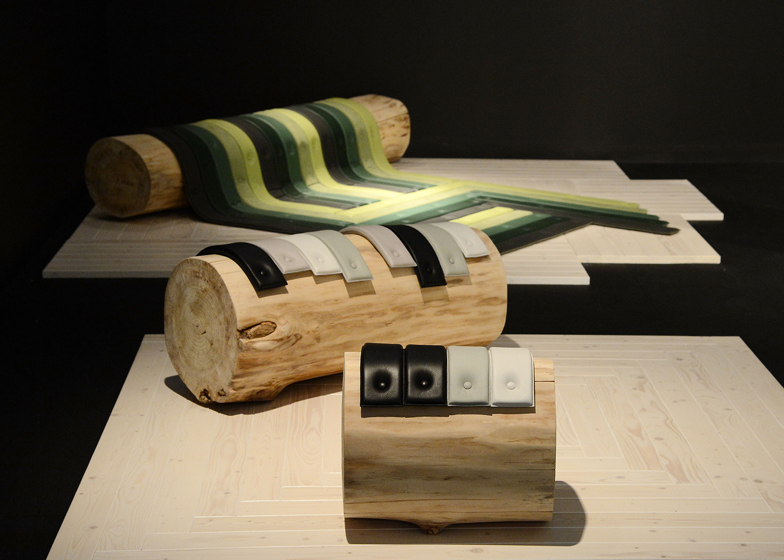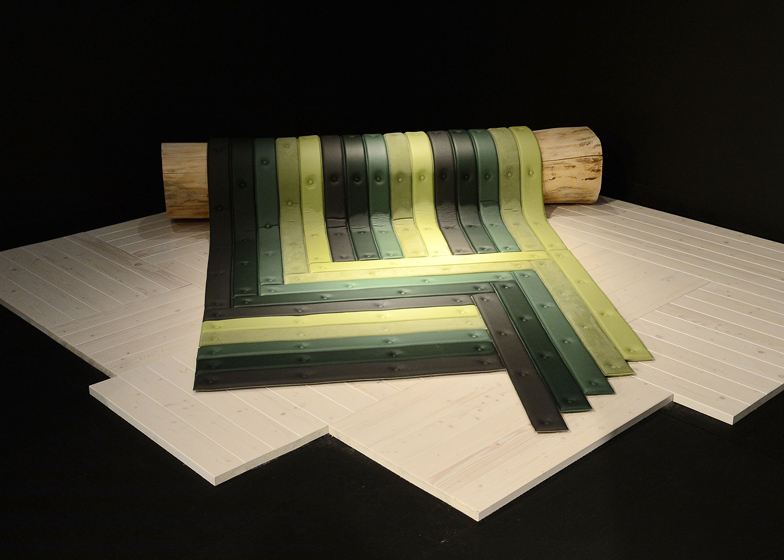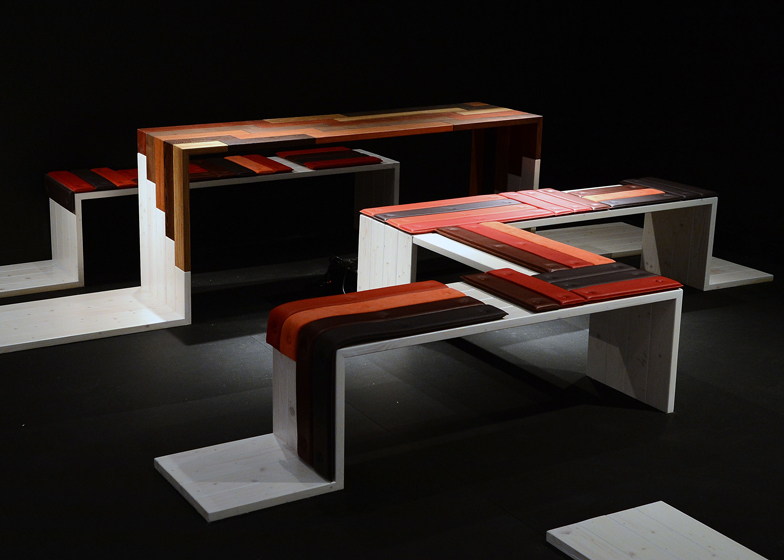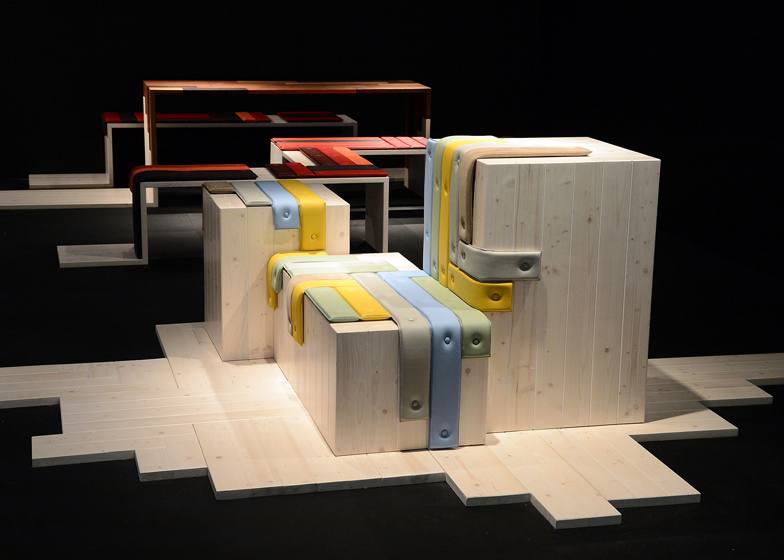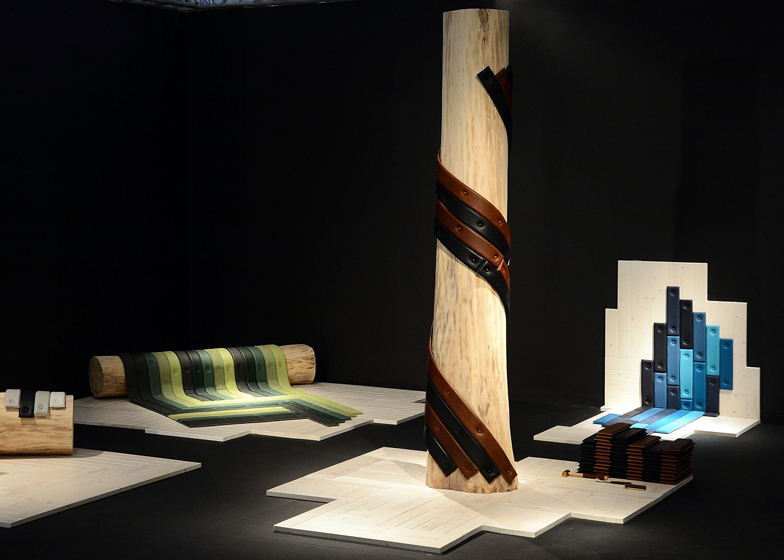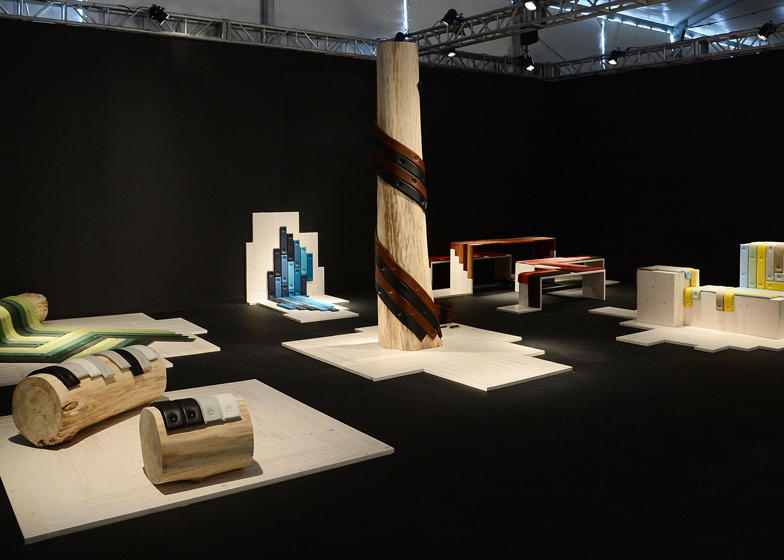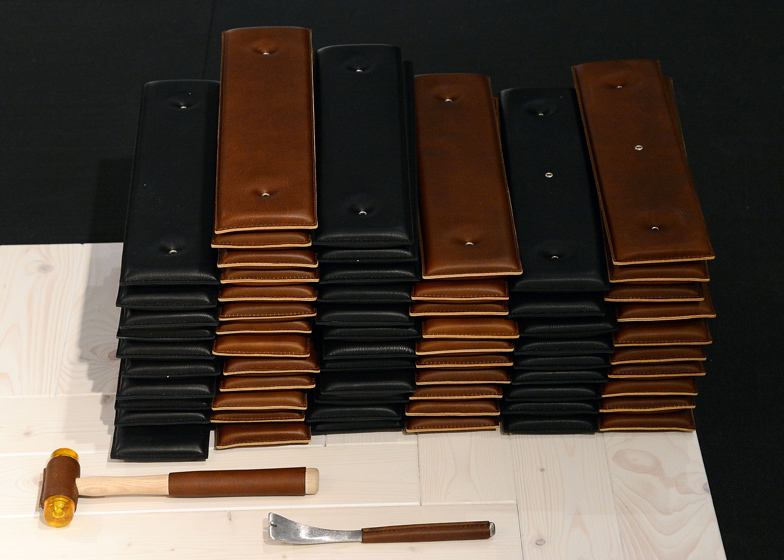Design Miami: Belgian designer Maarten de Ceulaer nailed bendy leather planks onto solid wood to create this installation of stripy furniture for Italian fashion house Fendi (+ slideshow).
Maarten de Ceulaer used materials provided by Fendi, a brand that traditionally specialises in fur and leather, to create the soft surfaces in the Transformations collection.
He drew on Fendi's signature motif, which is inspired by the geometric and abstract forms of Futurism and the Bauhaus, to create the patterned furniture.
The foam-filled planks are handmade from strips of leather and suede in various colours, and each has two eyelets for the leather-covered nails.
"I wanted to create a system with which I can create functional graphics, functional patterns," de Ceulaer told Dezeen at Design Miami. "So I decided to make them soft and to make them upholstered with foam, so they become nothing more than cushions, basically, stripes of cushions, with which you can do anything."
"You just smack it onto a wall with a special tool, which has a curve, so you can easily hammer it into anything," he added.
Whitewashed pine was chosen as a surface. "It’s logical that you nail something to wood," he said, "and I’m doing the same thing [with wood] that I do with the leather – it’s all different kinds of patchworks which flow from one to the other."
He added: "I didn’t want to design a sofa or a chair, but rather a system that does the same – you just find some boxes like you see here and you can create your sofa, or you can create your daybed."
Fendi has previously commissioned work from Formafantasma, who showed pieces made from discarded leather at the Design Miami/Basel fair in Switzerland this year, and Aranda/Lasch, who made seating out of foam pyramids as part of a project for Design Miami in 2010.
Other projects by de Ceulaer we've featured on Dezeen include a series of knobbly foam seats and colourful lights tinted by food colouring.
Dezeen was at Design Miami last week reporting on all the highlights of the collectors fair, including an "ice halo" made of Swarovski crystals, a cast bronze lamp shaped like a bent Eiffel Tower and an entrance pavilion that looked like inflatable sausages – see all our stories about Design Miami.
See all our stories about Maarten de Ceulaer »
See all our stories about Fendi »
See all our stories about leather »
Photographs are courtesy of Fendi.
Here's some more information from Design Miami:
Fendi presents Transformations by Maarten de Ceulaer
Design Miami/ Miami 2012
Following the Design Miami/ Basel edition in June with Craftica by FormaFantasma, Fendi has invited Belgian designer Maarten de Ceulaer to develop for the December 2012 programme a project that responds to its visual identity and its legacy of Modernist-inspired patterns and emblems. Maarten was selected for this project because he has demonstrated a remarkable affinity for crafting sophisticated furniture and objects imbued with lyrical, whimsical narrative.
The designer found particular inspiration in Fendi’s signature Pequin motif, creating “Transformations” in celebration of Fendi’s long heritage of abstract rectilinear and geometric imagery. Throughout the decades, Fendi designers have drawn from the beautiful, groundbreaking work of pioneering design movements such as the Wiener Werkstätte, De Stijl, Futurism, the Bauhaus and Art Deco. Since 1983, Fendi has incorporated striped Pequin materials into many accessory lines, from handbags to luggage. Numerous designs for Fendi furs also feature patterns that evoke the feel of vanguard graphic designs from the 1910s to the 1930s.
For Design Miami/ 2012, Maarten has transformed this repertoire of two-dimensional expression into a three-dimensional installation, exploring the boundaries between hard and soft, natural and man-made, organic and geometric, luxurious and mundane. Converting the idea of a stripe into a physical module based on a piece of lumber, “Transformations” juxtaposes lacquered wood boards and tree stumps with exquisitely handmade leather planks arranged in a variety of eye-catching, multicolored compositions. The result is a total environment that, as whole, becomes a living pattern reminiscent of design work from the early years of Modernism.
The “soft planks” that Maarten developed for this project can be applied wherever additional comfort is desired: the gesture of applying them is as simple as nailing a board to a tree.

